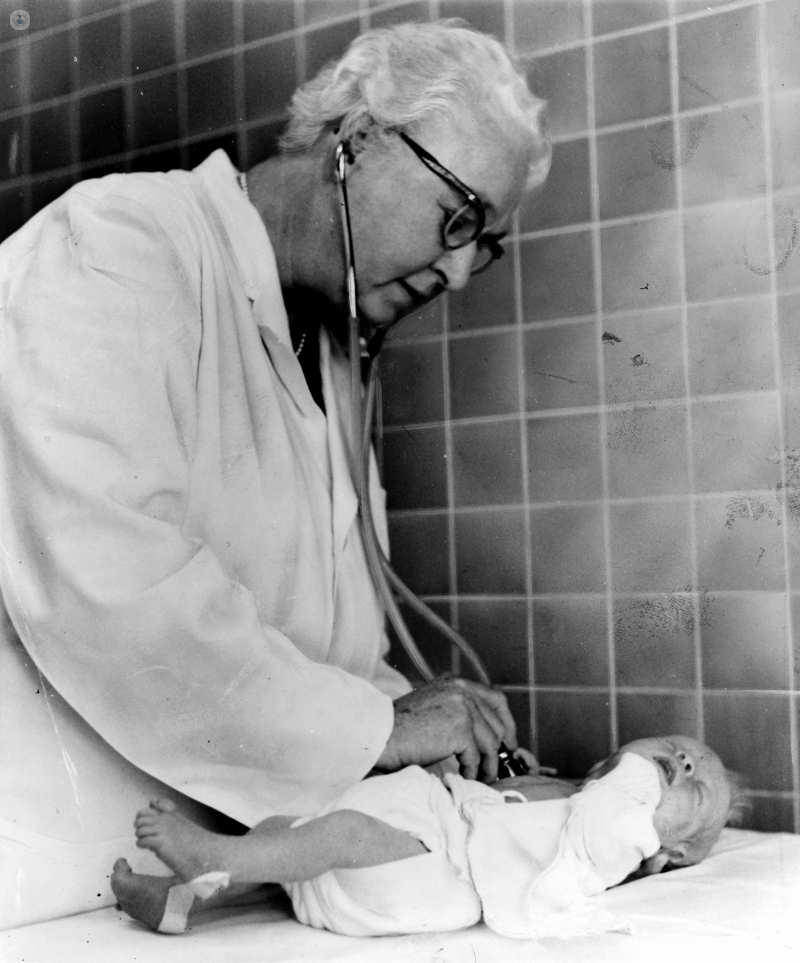

What is the Apgar score?
The Apgar score is a way of measuring the health of a newborn, in the first minute after birth and in the fifth minute. It was developed by Virginia Apgar, an anaesthesiologist in the US, in 1952 as a means of quantifying the effect of anaesthesia administered during birth on babies.
 Virginia Apgar, creator of the Apgar score
Virginia Apgar, creator of the Apgar score
What does the Apgar test consist of?
The method involves examing the baby, taking into account five criteria and making a score of each section:
- Respiratory effort: if the baby does not breathe (0 points), if s/he breathes slowly (1 point) or irregularly or if s/he cry well (2 points). (Respiration)
- Heart rate: if there are no beats (0 points), if the heart rate is less than 100 beats/minute (1 point) or if it is higher than 100 beats/minute (2 points). (Pulse)
- Muscle tone: if the muscles are flaccid (0 points), if there is some muscle tone (1 point) or if there is active movement (2 points). (Activity)
- Reflexes: if there is no reaction (0 points), if there are grimaces or gestures (1 point) or if there are coughs and gestures (2 points). (Grimace)
- Skin color: if it is pale blue (0 points), if it is pink with blue extremities (1 point) and if it is all pink (2 points). (Appearance)
The different criteria create the backronym (a constructed acronym which is created to fit an existing phrase) APGAR.
Why is the Apgar test performed?
This test is done to immediately check the newborn's health after birth, and if they are experiencing heart problems or need help with breathing.
Meaning of abnormal Apgar score
If the sum of the results is less than 7, it means that the baby needs medical attention. Low scores usually are present after caesarean section, a difficult delivery or presence of fluid in the baby's airway. So, if the score is low, oxygen may be needed to help the baby’s breathing, or physical stimulation so that the heart beats healthily.
A low rating does not mean that the newborn will have health problems in the future.
